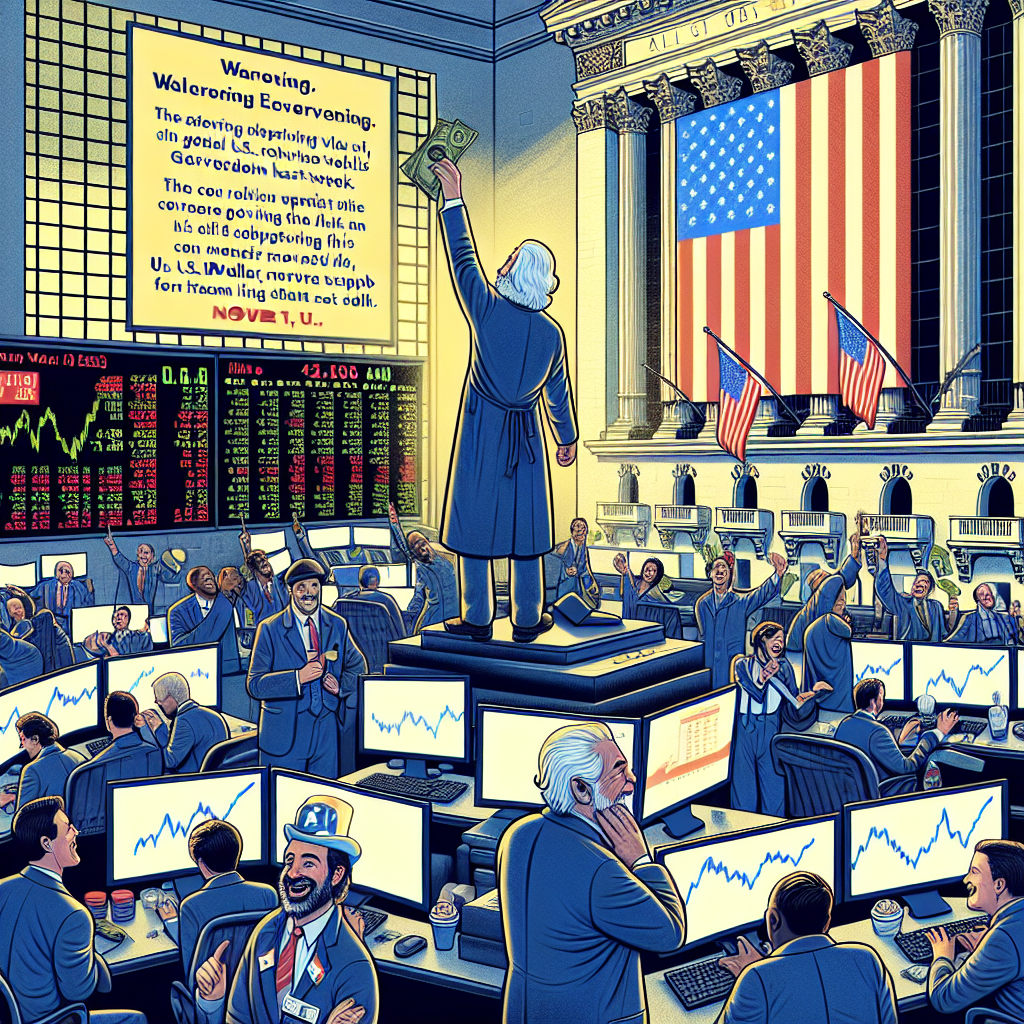On Monday, November 10, global stock markets rose as market sentiment turned optimistic with hopes that the longest government shutdown in U.S. history is nearing its end. Meanwhile, the U.S. dollar is also recovering from last week’s decline.
Late Sunday night, the U.S. Senate, in a critical vote of 60-40, successfully initiated the cloture process on the temporary spending bill, preventing the Democratic camp from using filibuster tactics to obstruct negotiations and legislative progress. This ensures that the spending bill can proceed with a simple majority, helping to bring the government shutdown standoff to a close.
These developments pushed Nasdaq futures up by 1.1%, while S&P 500 index futures also rose by 0.65%.
The MSCI Asia-Pacific Index, which measures stock markets in the Asia-Pacific region excluding Japan, increased by 0.9%, and the Nikkei Index in Japan also rose by approximately 1%.
Chief Investment Strategist at Shengbao, Charu Chanana, noted that while there may be short-term rebounds in the market, news events could still cause volatility until the issues are ultimately resolved.
If the spending bill is eventually passed by the Senate, it will still need approval from the House of Representatives and be sent to President Trump for signing, a process that may take several days.
The impact of the government shutdown on the U.S. economy is gradually intensifying. Various federal employees, including airport air traffic controllers and law enforcement personnel, have not received their salaries. Meanwhile, the Federal Reserve lacks government statistics for economic decision-making and must rely on private data.
White House economic adviser Kevin Hassett mentioned in an interview that Thanksgiving is traditionally a peak season for U.S. travel and consumption. If the government shutdown persists and leads to understaffing of air traffic controllers, restricting air traffic, the impact could spill over to other aspects of the economy, potentially turning the U.S. fourth-quarter GDP growth negative.
Data from last Friday also indicated a sharp drop in U.S. consumer confidence to its lowest level in nearly three and a half years in early November, as households worry about the economic impact.
Chanana remarked, “While reaching an agreement will help rebuild confidence and liquidity in the market, it cannot erase the damage caused by the longest shutdown in U.S. history.’
Nonetheless, overall market sentiment remained optimistic on Monday.
In European stock index futures, Euro Stoxx 50 representing blue-chip stocks and Germany’s DAX futures both rose by nearly 1.4%, while FTSE 100 futures in the UK increased by 0.8%.
U.S. bond yields moved slightly higher, with the 10-year yield rising by 3.5 basis points to 4.1278% and the 2-year yield up by approximately 3 basis points to 3.5886%.
In the foreign exchange market, the U.S. dollar made a recovery from last week’s decline. The euro fell by 0.06% against the dollar to 1.1558, the pound dropped by 0.1% to 1.3152, and the dollar index held steady at 99.64.
Market expectations currently put the likelihood of a Fed rate cut in December at 63%.
Economists at ANZ Bank stated in a report, “Overall, the tone of the Fed last week leaned towards a pause in easing in December, despite most speakers being non-voting regional Fed presidents.”
“It appears that the 12 voting members, consisting of 7 Board of Governors and 5 regional Fed presidents, may vote in favor of a 25 basis point rate cut,” ANZ economists stated. “We do not believe the rate cut is a done deal, and the decision will depend on upcoming data and the balance of risks related to the outlook.”
The dollar rose by 0.3% against the yen to 153.90.
The Bank of Japan’s summary of the October meeting released on Monday showed that policymakers believe the case for a rate hike is becoming increasingly compelling, with some calling for ensuring that the momentum of corporate wage increases can be sustained.
In commodities, oil prices increased, with Brent crude futures rising by 0.53% to $63.97 per barrel and U.S. crude increasing by 0.6% to $60.11.
Spot gold rose by 1.2% to $4,047.23 per ounce.
(This article referenced relevant reports from Reuters)

